Engine Coolant Thermostat Replacement 2.4L
Removal Procedure
- Drain the coolant. Refer to Cooling System Draining and Filling .
- Loosen the hose clamp on the upper radiator hose at the thermostat housing.
- Disconnect the upper radiator hose form the thermostat housing.
- Remove the mounting bolts that hold the thermostat housing to the cylinder head.
- Remove the thermostat housing from the cylinder head.
- Remove the seal ring from the thermostat housing.
- Remove the thermostat from the thermostat housing by pressing the thermostat mounting flange downward and then rotating the flange clockwise.
- Inspect the valve seat for foreign matter that could prevent the valve from sealing properly.
- Inspect the thermostat for proper operation. Refer to Thermostat Diagnosis .
- Clean the thermostat housing and the cylinder head mating surfaces.
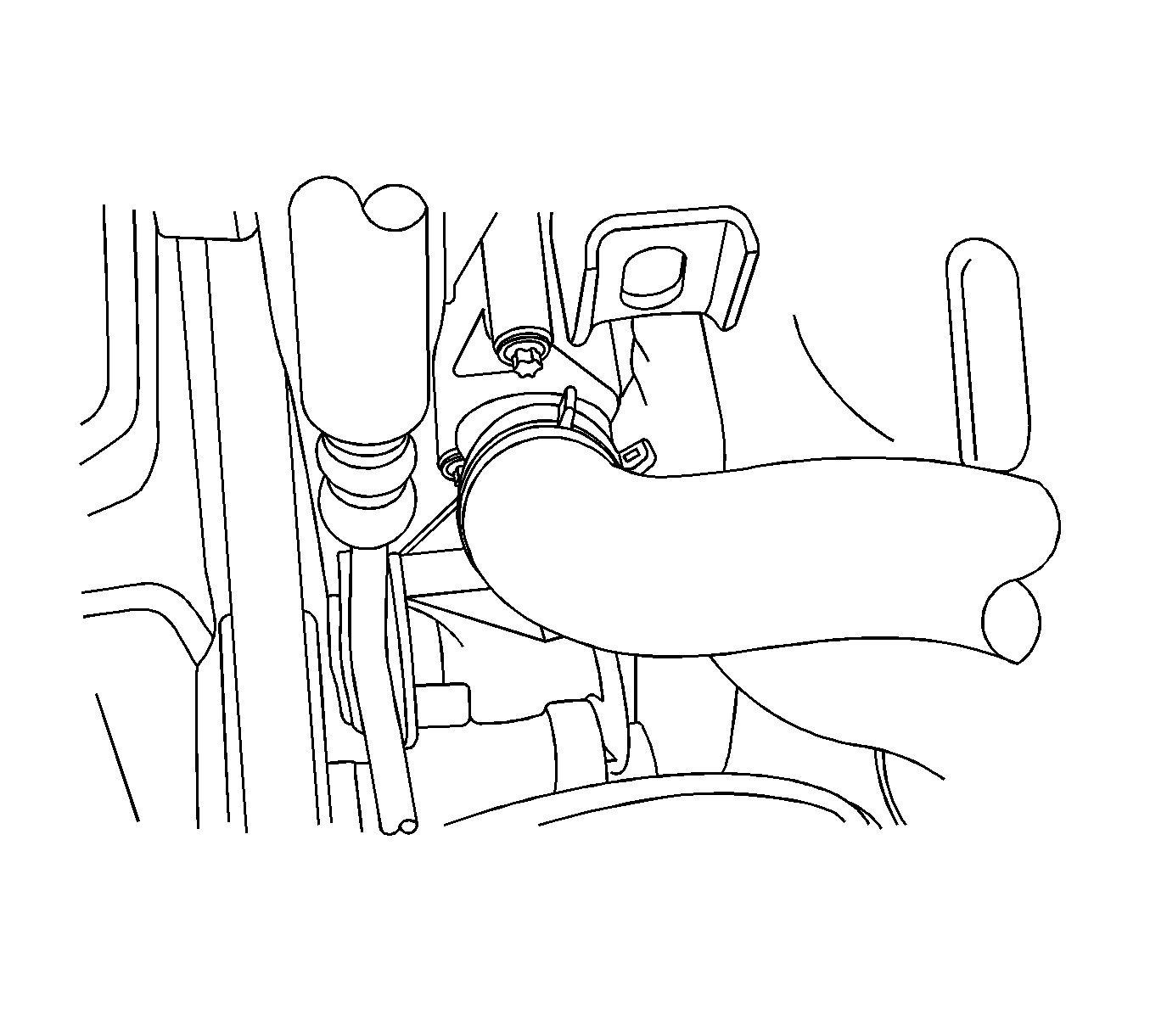
Caution: To avoid being burned, do not remove the radiator cap or surge tank cap while the engine is hot. The cooling system will release scalding fluid and steam under pressure if radiator cap or surge tank cap is removed while the engine and radiator are still hot.
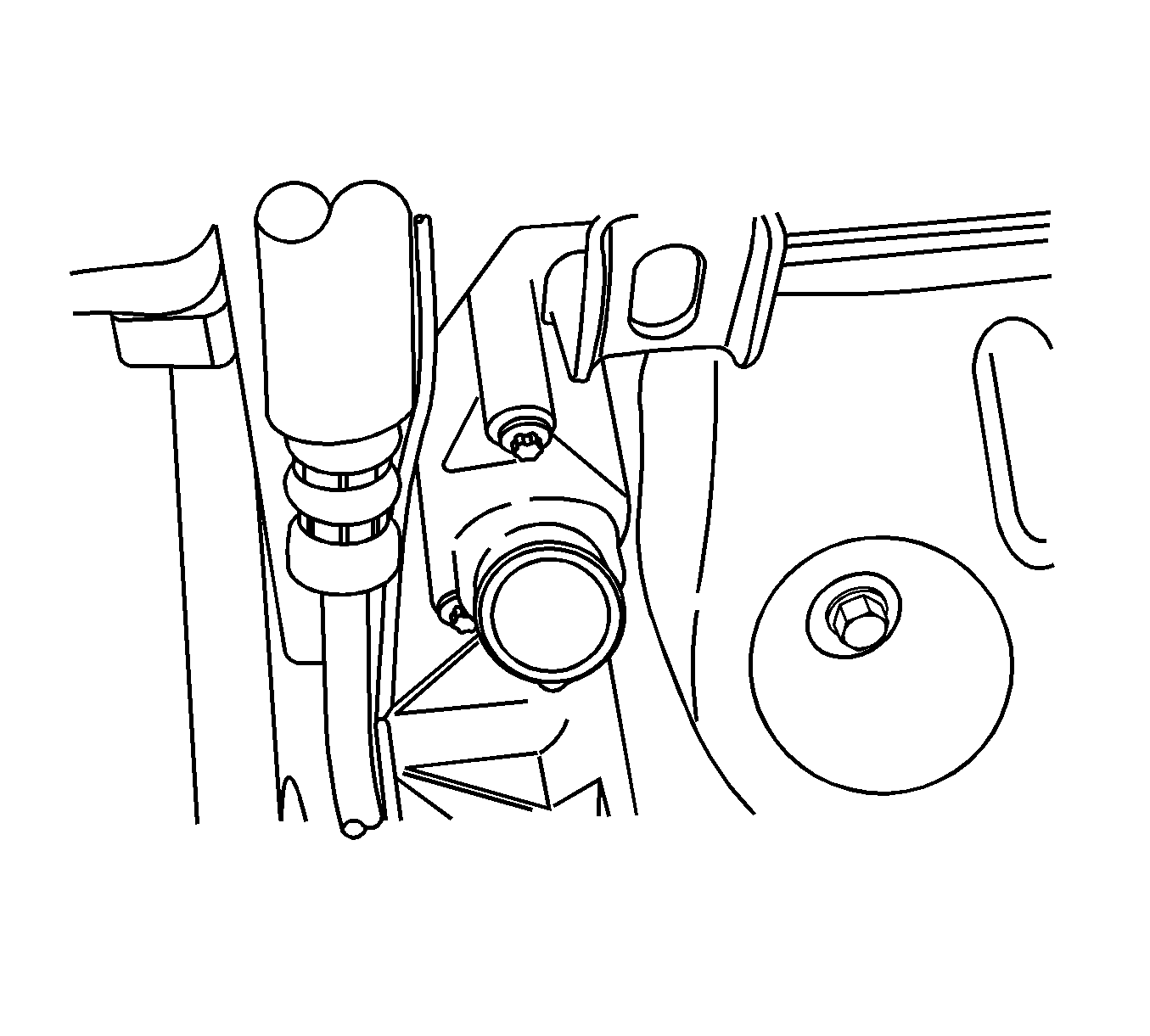
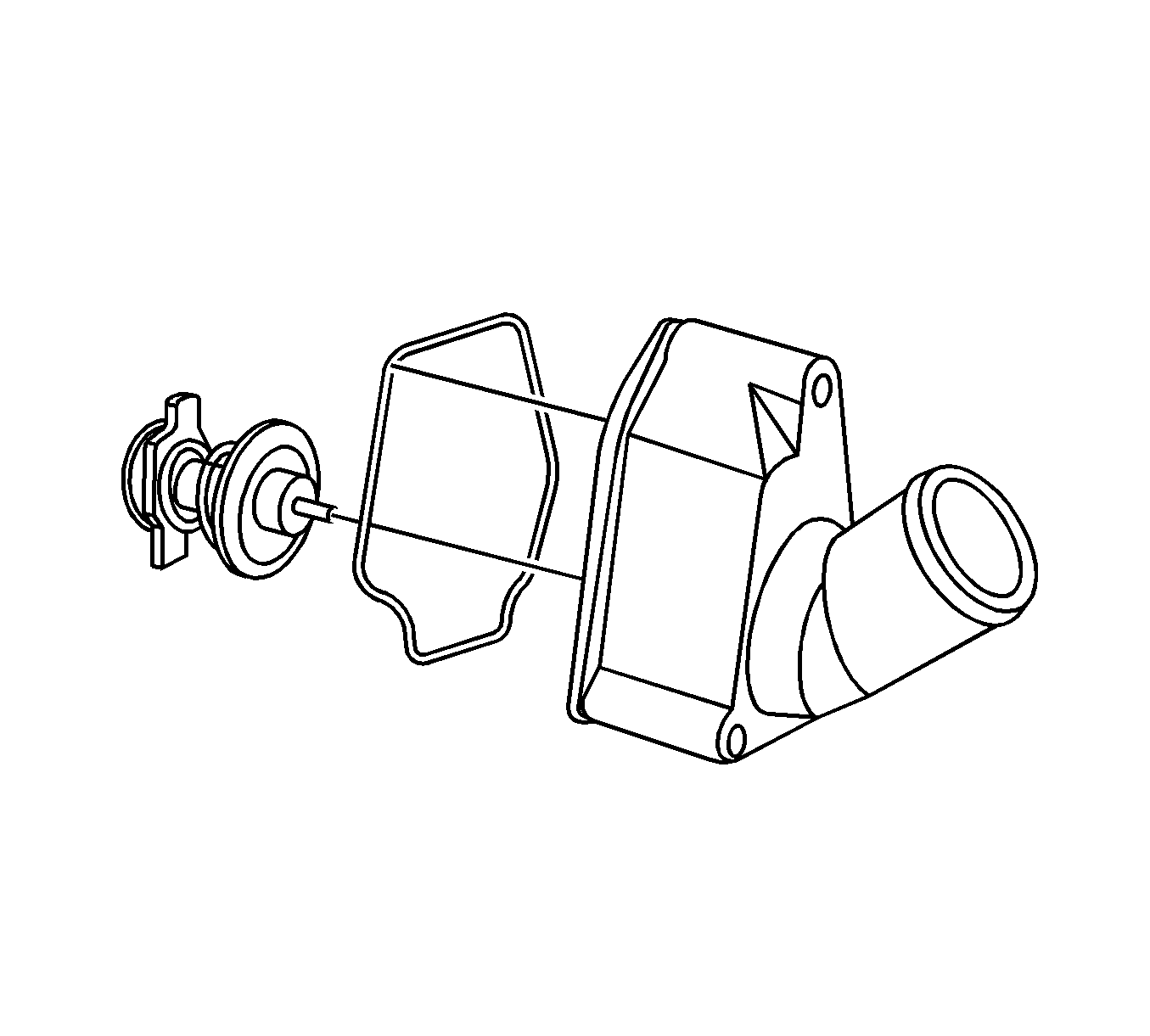
Installation Procedure
- Install the thermostat into the thermostat housing by pressing the thermostat mounting flange downward and then rotating the flange counterclockwise. Rotate the thermostat mounting flange until it is seated in the thermostat housing recesses.
- Install a new seal ring into the recess in the thermostat housing.
- Install the thermostat housing to the cylinder head.
- Secure the thermostat housing to the cylinder head with the mounting bolts.
- Connect the upper radiator hose to the thermostat housing.
- Secure the upper radiators to the thermostat housing with a hose clamp.
- Refill the engine cooling system. Refer to Cooling System Draining and Filling .


Notice: Refer to Fastener Notice in the Preface section.
Tighten
Tighten the thermostat housing mounting bolts to 15 N·m (11 lb ft).

Engine Coolant Thermostat Replacement 3.2L
Removal Procedure
- Drain the coolant. Refer to Cooling System Draining and Filling .
- Loosen the lower radiator hose clamp at the water pipe.
- Disconnect the lower radiator hose from the water pipe.
- Remove the water pipe attaching bolts from the cylinder head and the thermostat housing.
- Remove the water pipe.
- Remove the heater inlet and outlet hose from the heater inlet and outlet pipe.
- Remove the heater inlet and outlet pipe from the thermostat housing.
- Remove the mounting bolts that hold the thermostat housing to the cylinder block.
- Remove the thermostat housing from the cylinder block.
- Remove and discard the thermostat housing to engine block gasket.
- Remove thermostat (1) from thermostat housing (2) as follows:

Caution: To avoid being burned, do not remove the radiator cap or surge tank cap while the engine is hot. The cooling system will release scalding fluid and steam under pressure if radiator cap or surge tank cap is removed while the engine and radiator are still hot.
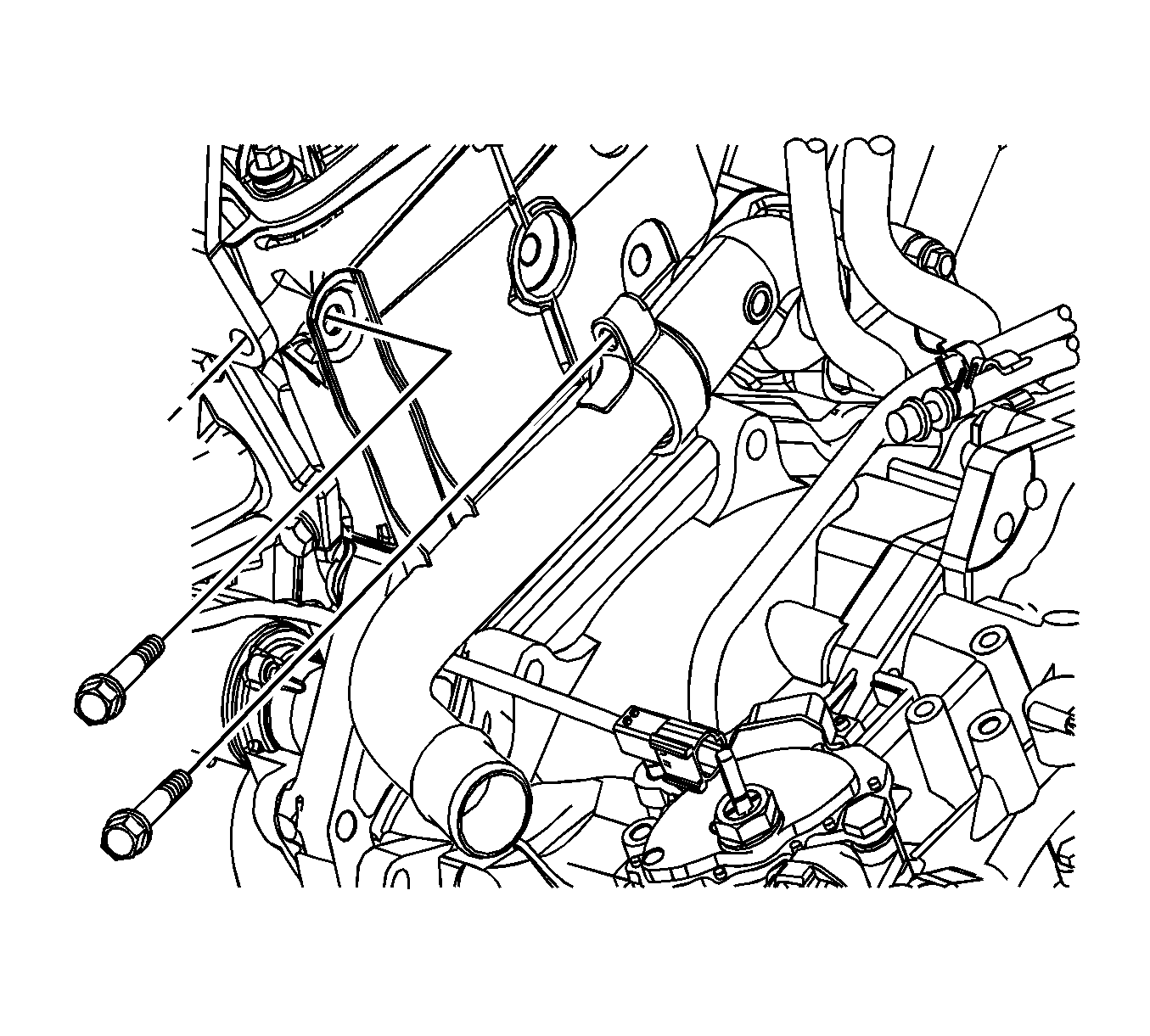
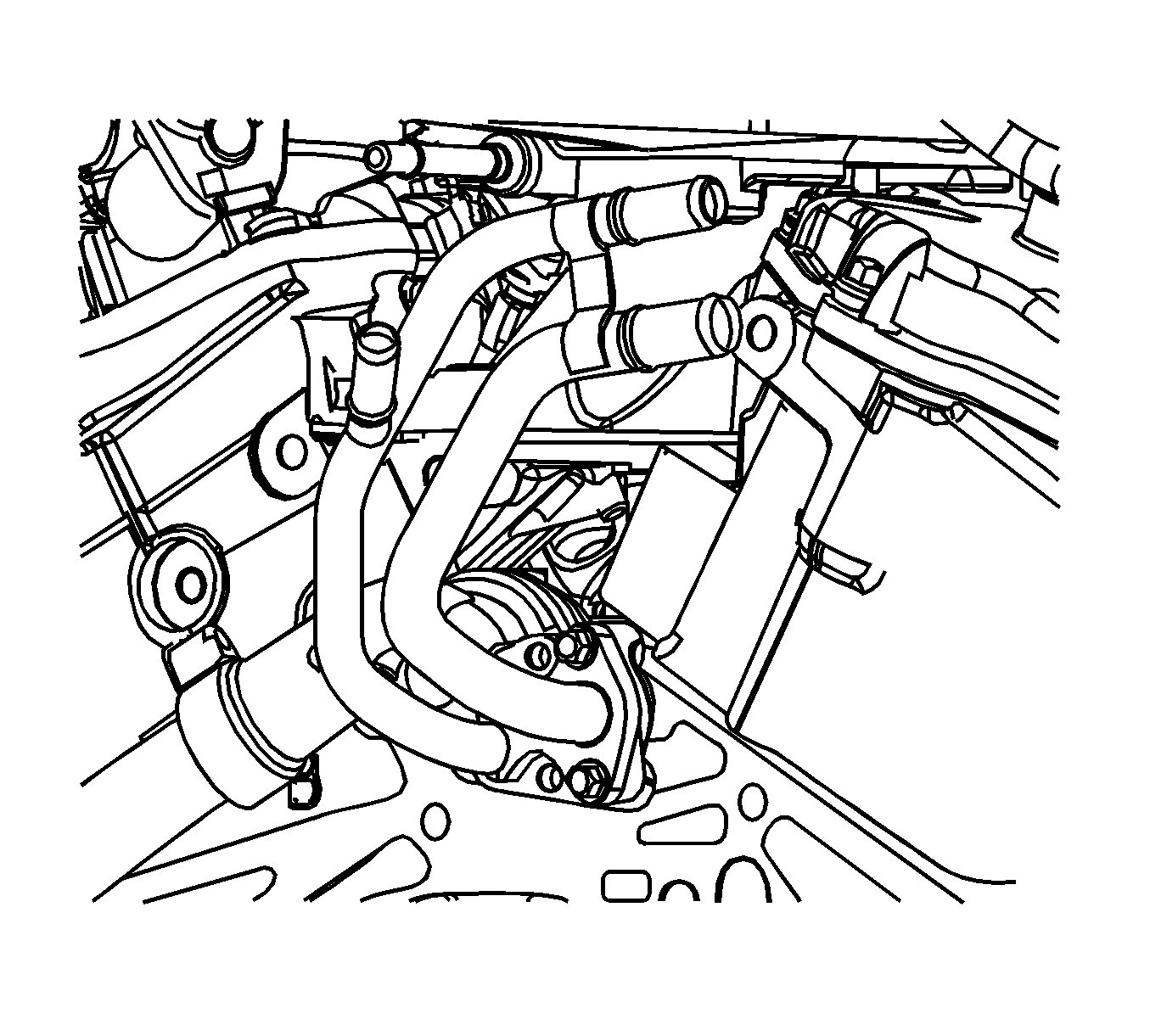

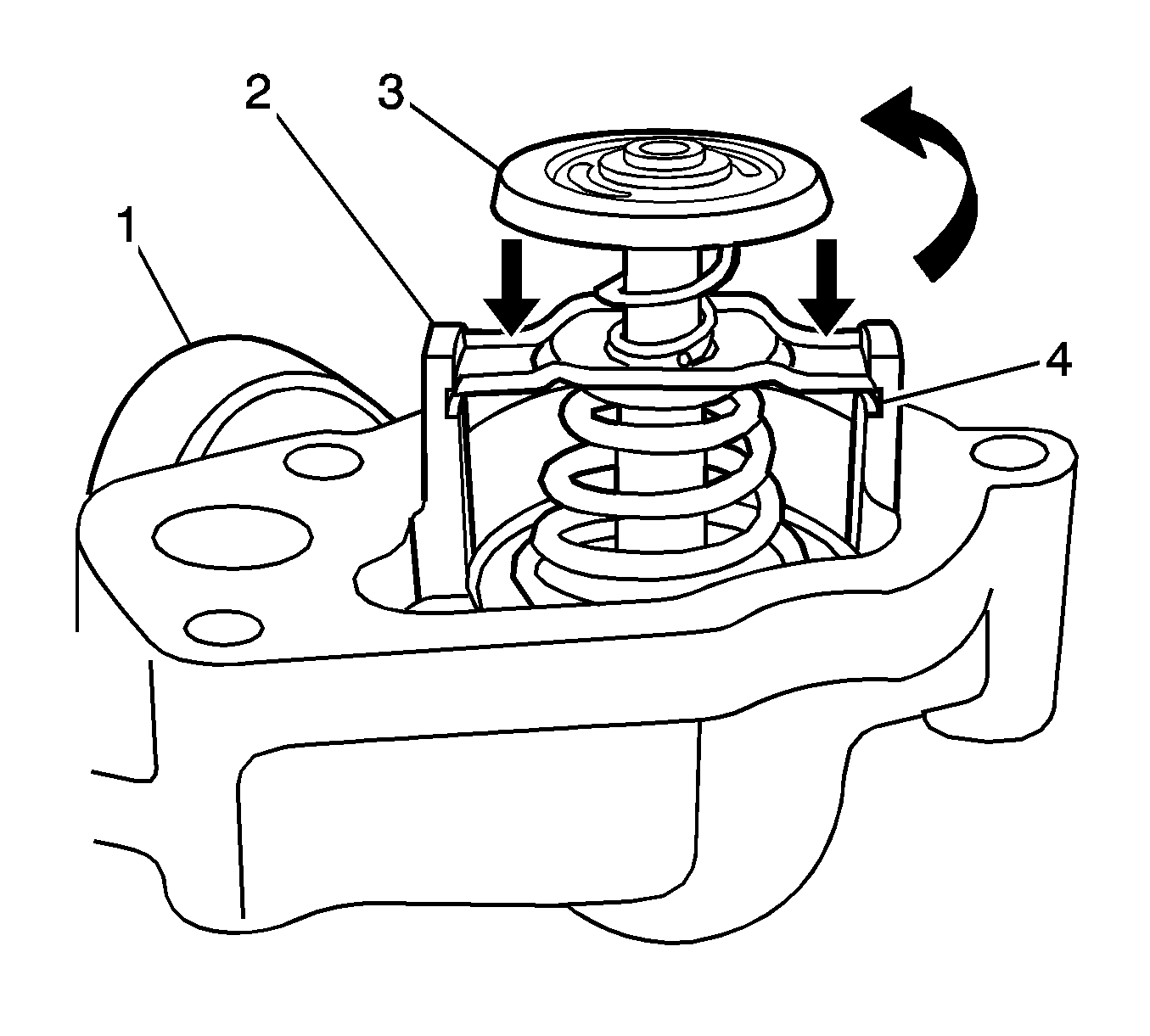
| 11.1. | Secure the thermostat housing by gripping in a vice fitted with soft jaws. |
| 11.2. | Depress the retaining bar (3) on both sides of the thermostat and rotate the thermostat until it clears the retaining lugs (4) on the thermostat housing (2). |
| 11.3. | Release the thermostat spring force. |
| 11.4. | Remove the thermostat assembly from the thermostat housing. |
Installation Procedure
- Install the heater inlet and outlet pipe to the thermostat housing.
- Install the thermostat into the thermostat housing.
- Ensure that the engine block and thermostat housing mating surfaces are clean and dry.
- Install a new gasket to the thermostat housing.
- Install the thermostat housing to the engine block.
- Install the water pipe.
- Connect the lower radiator hose to the thermostat housing.
- Connect the heater inlet and outlet hoses to the heater inlet and outlet pipe.
- Secure the lower radiator hose to the thermostat housing with a hose clamp.
- Refill the engine cooling system. Refer to Cooling System Draining and Filling .
Notice: Refer to Fastener Notice in the Preface section.

Tighten
Tighten the heater inlet and outlet pipe retaining bolts to 12 N·m (106 lb in).

Tighten
Tighten the thermostat housing attaching bolts to 10 N·m (89 lb in).

Tighten
| • | Tighten the water pipe to thermostat housing attaching bolt to 20 N·m (15 lb ft). |
| • | Tighten the water pipe to cylinder head attaching bolt to 33 N·m (24 lb ft). |

Engine Coolant Thermostat Replacement 2.0L Diesel
Removal Procedure
- Drain the coolant. Refer to Cooling System Draining and Filling .
- Remove the engine cover. Refer to Engine Cover Replacement .
- Remove the charge air cooler inlet hose from the charge air cooler. Refer to Charge Air Cooler Inlet Pipe and Outlet Pipe Replacement .
- Disconnect the radiator upper hose from the thermostat housing.
- Remove the fuel injection pump-to-rail feeding pipe retaining bolt.
- Remove the thermostat housing.
- Remove the thermostat with the gasket.
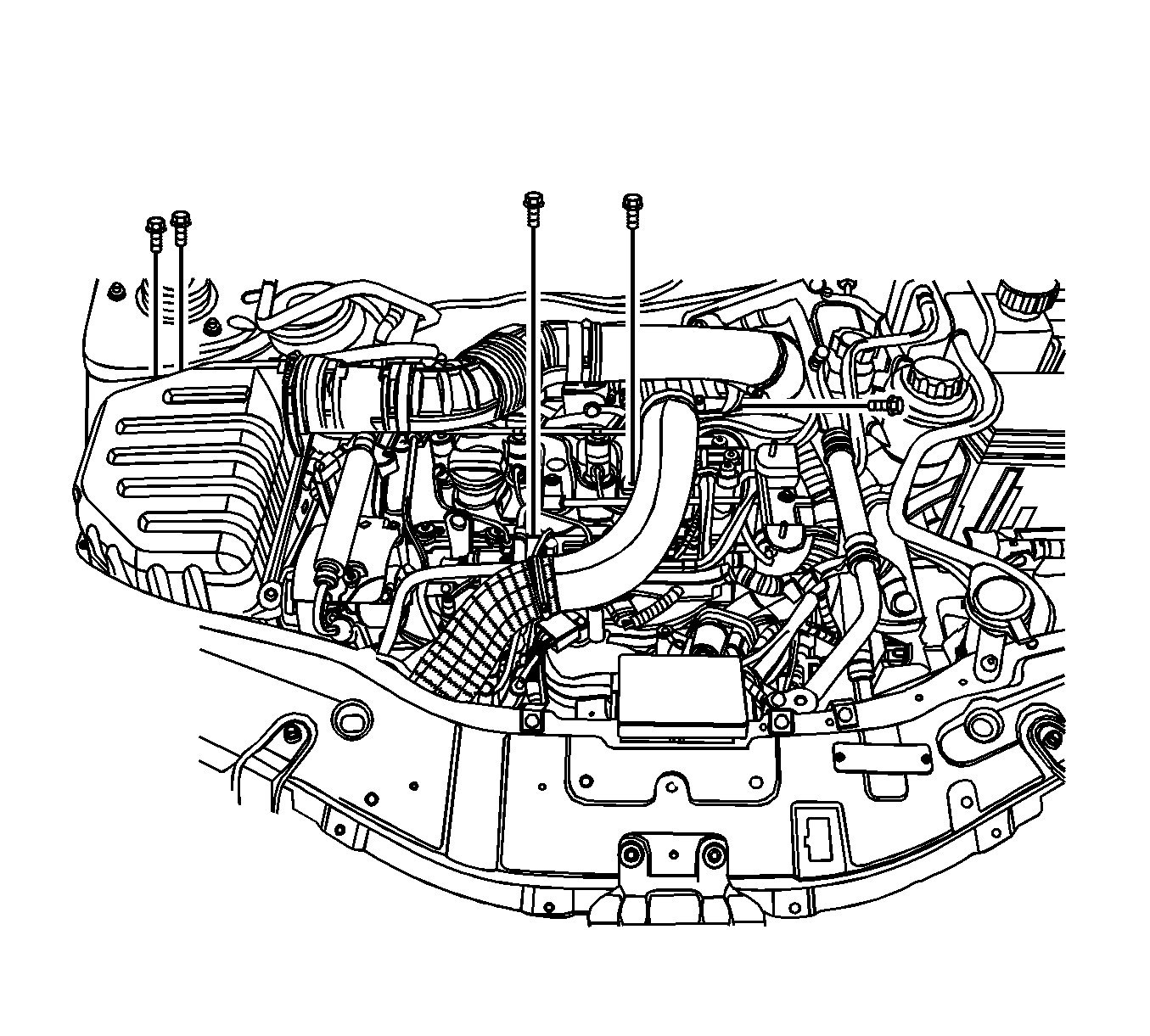
Caution: To avoid being burned, do not remove the radiator cap or surge tank cap while the engine is hot. The cooling system will release scalding fluid and steam under pressure if radiator cap or surge tank cap is removed while the engine and radiator are still hot.
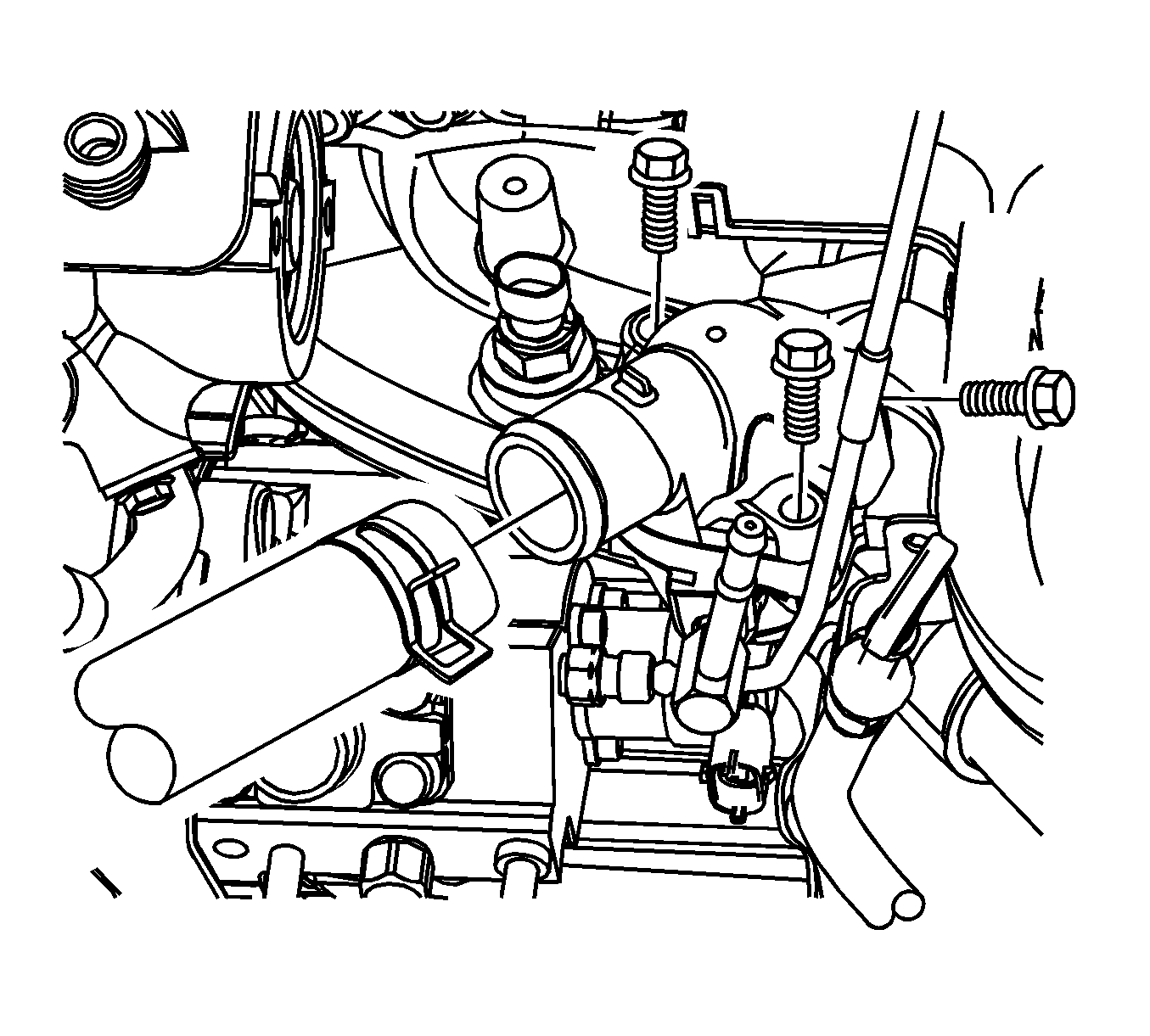
Installation Procedure
- Install the thermostat with a new gasket.
- Install the thermostat housing.
- Install the fuel pipe-to-common rail retaining bolt.

Notice: Refer to Fastener Notice in the Preface section.
Tighten
| • | Tighten the thermostat housing bolts to 23 N·m (17 lb ft). |
| • | Tighten the fuel pipe-to-common rail retaining bolt to 10 N·m (88.5 lb in). |
